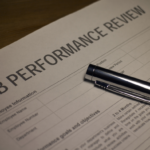
by admin | Jun 24, 2021 | Human Resources
 There are certain issues that have taken center stage in the collective conscious when talking about the workplace, the future of work and how the current workforce is faring under the current conditions. Naturally, as those things enter the collective conscious, researchers find themselves asking what exactly holds true and what can we learn from it?
There are certain issues that have taken center stage in the collective conscious when talking about the workplace, the future of work and how the current workforce is faring under the current conditions. Naturally, as those things enter the collective conscious, researchers find themselves asking what exactly holds true and what can we learn from it?
As usual, my inbox is full of the latest studies and surveys being conducted by HR vendors, researchers and employers of all sizes. In today’s data drop, we’re going to take a closer look at how employees view diversity and inclusion efforts, what challenges they’re facing when it comes to mental health and the impact the gig economy is having.
The D&I Appetite
At this point, there should be little doubt around the importance of D&I or DEI in your organization. It’s been well established the impact it has on the bottom line and employer brands, but if you needed more reassurance, the latest study from Boston Consulting Group should hammer it home.
The study asked questions of more than 200,000 employees across 190 countries and the results shouldn’t come as a surprise to anyone who’s been following sentiments around DEI over the last year. Results included the following:
- More than half (51%) of U.S. respondents said they would exclude a company from their job search if its values and stance on diversity and inclusion (D&I) didn’t match their own beliefs. This number was even higher among respondents 30 years and younger (56%).
- D&I became more important over the last year across all age groups globally. In the U.S., respondents 30 years and younger (72%) were most likely to agree with this statement compared to all U.S. respondents (63%) and all respondents globally (69%).
It’s a notable sentiment following the release of research by diversity platform Headstart as part of its “Discrimination in American Hiring” report. The findings show that 54% of those seeking a new job in the last two years felt they were frequently discriminated against. That number rose to 66% for Black Americans and 83% for those who identify as gender-diverse. Interestingly, however, 30% of respondents who faced recruitment discrimination would consider reapplying for the same company.
Mental Health Struggles
In June of last year, the Centers for Disease Control and Prevention (CDC) released data which showed that 40% of Americans were struggling with mental health. That number hasn’t decreased as the pandemic has continued and the months that followed included a hectic election and numerous other crises.
A more recent report from The Standard, an Oregon based insurance company, showed that 55% of workers surveyed said that a mental health issue had affected them more since the pandemic began. MetLife’s annual Employee Benefits Trends Study backs this up, with 54% saying mental health has been their biggest concern during the pandemic.
This won’t come as a surprise to HR teams that have been working toward developing mental health support tools for their workforces, but it should also be extended to talent teams as they consider their hiring processes.
Among the unemployed, one in five are or have been treated for depression in the last year. Many suffer from sleep loss and high levels of stress that can impact their ability to search and interview for a new job. Long term unemployment can lead to serious health issues such as obesity and other conditions related to stress and inactive lifestyle.
Expanding Gig Economy
Globally the gig economy has seen a boom as layoffs and needs for flexible scheduling have seen more people around the world adopt gig work than ever before. In the U.S., around 40% of Americans are currently working in gig or contract roles.
Job boards are now seeing a stark rise in contract job postings, with Resume-Library noting a 58% increase in the demand for handyman roles month over month. While many think of rideshare drivers and freelancer graphic artists when they think of gig work, the top five gig postings on the site now include the following:
- Handyman +58.3%
- Market Researcher +50%
- Packer +20.3%
- Social Media +4.5%
- Photographer +4.3%
The U.S. is currently the fastest growing freelance market in the world, experiencing a 78% growth in gig positions over the last year, with the UK following behind at 59% and Brazil at 48%.
By David Rice
Originally posted on ThinkHR

by admin | Jun 15, 2021 | Financial Planning

There have been important changes to the Child Tax Credit that will help many families receive advance payments starting this summer. The American Rescue Plan Act (ARPA) of 2021 expands the Child Tax Credit (CTC) for tax year 2021 only.
The expanded credit means:
- The credit amounts will increase for many taxpayers.
- The credit for qualifying children is fully refundable, which means that taxpayers can benefit from the credit even if they don’t have earned income or don’t owe any income taxes.
- The credit will include children who turn age 17 in 2021.
- Taxpayers may receive part of their credit in 2021 before filing their 2021 tax return.
For tax year 2021, families claiming the CTC will receive up to $3,000 per qualifying child between the ages of 6 and 17 at the end of 2021. They will receive $3,600 per qualifying child under age 6 at the end of 2021. Under the prior law, the amount of the CTC was up to $2,000 per qualifying child under the age of 17 at the end of the year.
The increased amounts are reduced (phased out), for incomes over $150,000 for married taxpayers filing a joint return and qualifying widows or widowers, $112,500 for heads of household, and $75,000 for all other taxpayers.
Advance payments of the 2021 Child Tax Credit will be made regularly from July through December to eligible taxpayers who have a main home in the United States for more than half the year. The total of the advance payments will be up to 50 percent of the Child Tax Credit. Advance payments will be estimated from information included in eligible taxpayers’ 2020 tax returns (or their 2019 returns if the 2020 returns are not filed and processed yet).
The IRS urges people with children to file their 2020 tax returns as soon as possible to make sure they’re eligible for the appropriate amount of the CTC as well as any other tax credits they’re eligible for, including the Earned Income Tax Credit (EITC). Filing electronically with direct deposit also can speed refunds and future advance CTC payments.
Eligible taxpayers do not need to take any action now other than to file their 2020 tax return if they have not done so.
Eligible taxpayers who do not want to receive advance payment of the 2021 Child Tax Credit will have the opportunity to decline receiving advance payments. Taxpayers will also have the opportunity to update information about changes in their income, filing status or the number of qualifying children. More details on how to take these steps will be announced soon.
The IRS also urges community groups, non-profits, associations, education groups and anyone else with connections to people with children to share this critical information about the CTC. The IRS will be providing additional materials and information that can be easily shared by social media, email and other methods.
The IRS will provide more information about advance payments soon.
Additional information can be found at IRS.gov/childtaxcredit2021

by admin | Jun 9, 2021 | Benefit Management, Group Benefit Plans
 You have surely heard the terms “in-network” and “out-of-network” when referring to doctors or care facilities and your insurance plan. It can be confusing and make you wonder why it matters to you, as the consumer. Let’s explore these terms and find out more!
You have surely heard the terms “in-network” and “out-of-network” when referring to doctors or care facilities and your insurance plan. It can be confusing and make you wonder why it matters to you, as the consumer. Let’s explore these terms and find out more!
What are Health Insurance Plan Networks?
Health insurance plans create networks of doctors and facilities with which they have contracted to accept negotiated rates for the services they provide. When you subscribe to a specific insurance plan, you can look up the list of these contracted providers to see which ones are “in-network.” Most plans have helpful search tools online like “Find a Doctor” to save you time as you look for your specific doctor. You can also call the facility or healthcare provider and ask if they are considered “in-network” or “out-of-network” for your particular health insurance plan.
Why Choose “In-network” Providers?
When you make the choice to see an “in-network” healthcare provider or visit an “in-network” facility, you will typically pay less for the service (doctor visit, screening, hospital stay, etc.) than if you chose to use a provider outside of the plan’s network. Your insurance plan has negotiated a discounted cost for the service and passes that savings on to you, the subscriber. See the table below for an example.

Additional Benefit to “In-Network” Care
Some health insurance plans allow you to visit “out-of-network” doctors and facilities with the understanding that you will pay more for these services since they are not in an agreement with one another. However, you may not be able to apply these expenses towards your annual deductible. This means it may take you longer in the year, with more out-of-pocket expenses, to reach your deductible. Staying “in-network” alleviates this delay and any added costs.
Staying with “in-network” providers truly equals greater cost-savings to the consumer. By doing a little research upfront to find the doctors and facilities in your plan network, you will end up with less out-of-pocket expenses for your health care each year. While the choice is ultimately up to you on who you see for your care, looking within your plan network will reap you great benefits.

by admin | Jun 1, 2021 | HSA/HRA
 On May 10, 2021, the Internal Revenue Service (IRS) released Revenue Procedure 2021-25 announcing the annual inflation-adjusted limits for health savings accounts (HSAs) for calendar year 2022. An HSA is a tax-exempt savings account that employees can use to pay for qualified health expenses.
On May 10, 2021, the Internal Revenue Service (IRS) released Revenue Procedure 2021-25 announcing the annual inflation-adjusted limits for health savings accounts (HSAs) for calendar year 2022. An HSA is a tax-exempt savings account that employees can use to pay for qualified health expenses.
To be eligible for an HSA, an employee:
- Must be covered by a qualified high deductible health plan (HDHP);
- Must not have any disqualifying health coverage (called “impermissible non-HDHP coverage”);
- Must not be enrolled in Medicare; and
- May not be claimed as a dependent on someone else’s tax return.
The limits vary based on whether an individual has self-only or family coverage under an HDHP. The limits are as follows:
- 2022 HSA contribution limit:
- Single: $3,650 (an increase of $50 from 2021)
- Family: $7,300 (an increase of $100 from 2021)
- Catch-up contributions for those age 55 and older remains at $1,000
- 2022 HDHP minimum deductible*
- Single: $1,400 (no change from 2021)
- Family: $2,800 (no change from 2021)
- 2022 HDHP maximum out-of-pocket limit:
- Single: $7,050 (an increase of $50 from 2021)
- Family: $14,100** (an increase of $100 from 2021)
* The deductible does not apply to preventive care services nor to services related to testing for COVID-19. An HDHP also may choose to waive the deductible for coverage of COVID-19 treatment, and/or telehealth and other remote care services.
** If the HDHP is a non-grandfathered plan, a per-person limit of $8,700 also will apply due to the Affordable Care Act’s cost-sharing provision for essential health benefits.
By Kathy Berger
Originally posted on Mineral.com

by admin | May 25, 2021 | Human Resources
 The right performance management process for your organization depends in large part on what you want to accomplish with it and what you’re willing to invest in it. Here are some principles to keep in mind when deciding on your policy and performing assessments:
The right performance management process for your organization depends in large part on what you want to accomplish with it and what you’re willing to invest in it. Here are some principles to keep in mind when deciding on your policy and performing assessments:
- Performance reviews are often stressful and difficult because the employees don’t know how they’ll be evaluated and they’re worried they’ll be surprised with a bad review. But reviews, however often they’re done, shouldn’t be a surprise. If you give employees regular feedback on their performance and address poor performance when it happens, then the review becomes more of a reminder and summary of what employees are doing well and where they have opportunities to improve.
- Setting clear performance expectations and holding employees accountable to them improves efficiency and productivity. It also improves morale. Conversations with an underperforming employee may be challenging, but allowing poor performance to continue unabated can cause widespread frustration and resentment from coworkers whose work is affected by it. Ignoring poor performance only compounds the problem.
- Employees are more likely to take ownership over their performance goals if they have a role in defining those goals.
- Connecting performance measures to company objectives and values can increase employees’ sense of purpose and engagement by drawing a direct correlation between their individual work and performance and your collective success as a company.
- It’s helpful to structure performance evaluation meetings and conversations around the specific expectations set in the job description to ensure that the discussion is directly applicable to that employee’s particular job duties.
- Documenting performance evaluations can help you justify pay increases, decreases, or other employment decisions like termination that could be challenged as discriminatory. It’s safest to terminate an employee when you have documentation that justifies the legitimate business reasons for the termination.
 The right performance management process for your organization depends in large part on what you want to accomplish with it and what you’re willing to invest in it. Here are some principles to keep in mind when deciding on your policy and performing assessments:
The right performance management process for your organization depends in large part on what you want to accomplish with it and what you’re willing to invest in it. Here are some principles to keep in mind when deciding on your policy and performing assessments:




